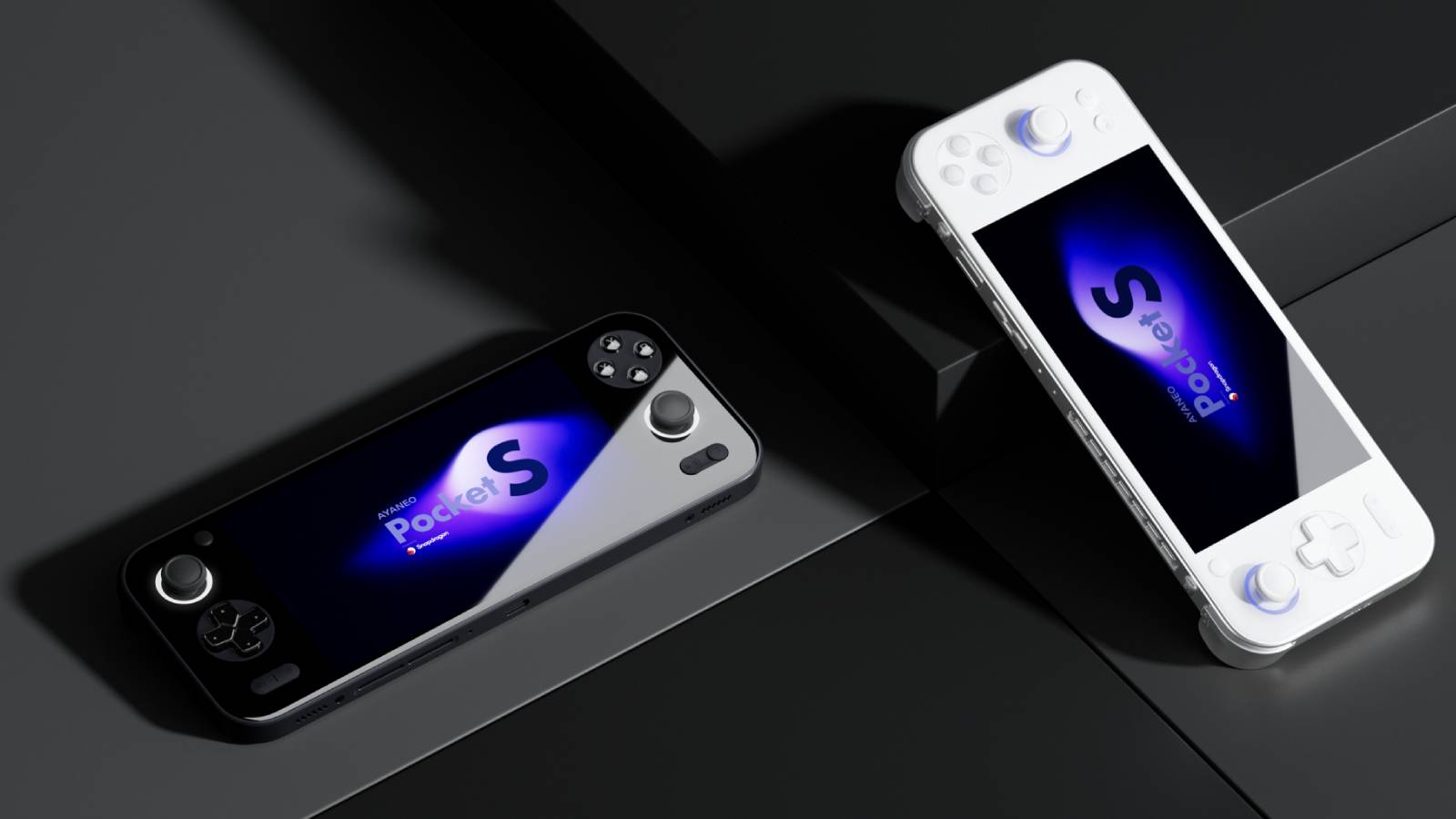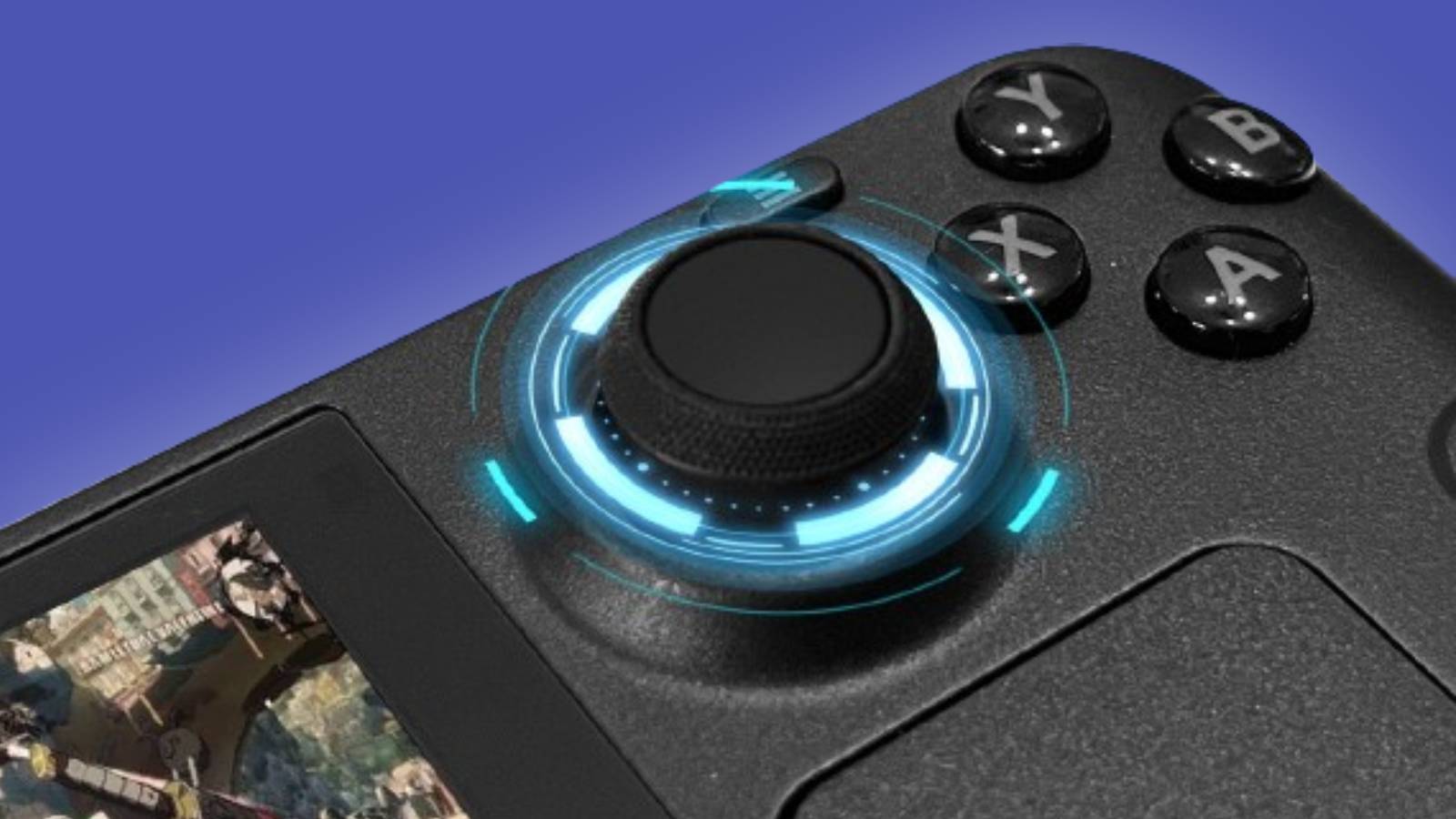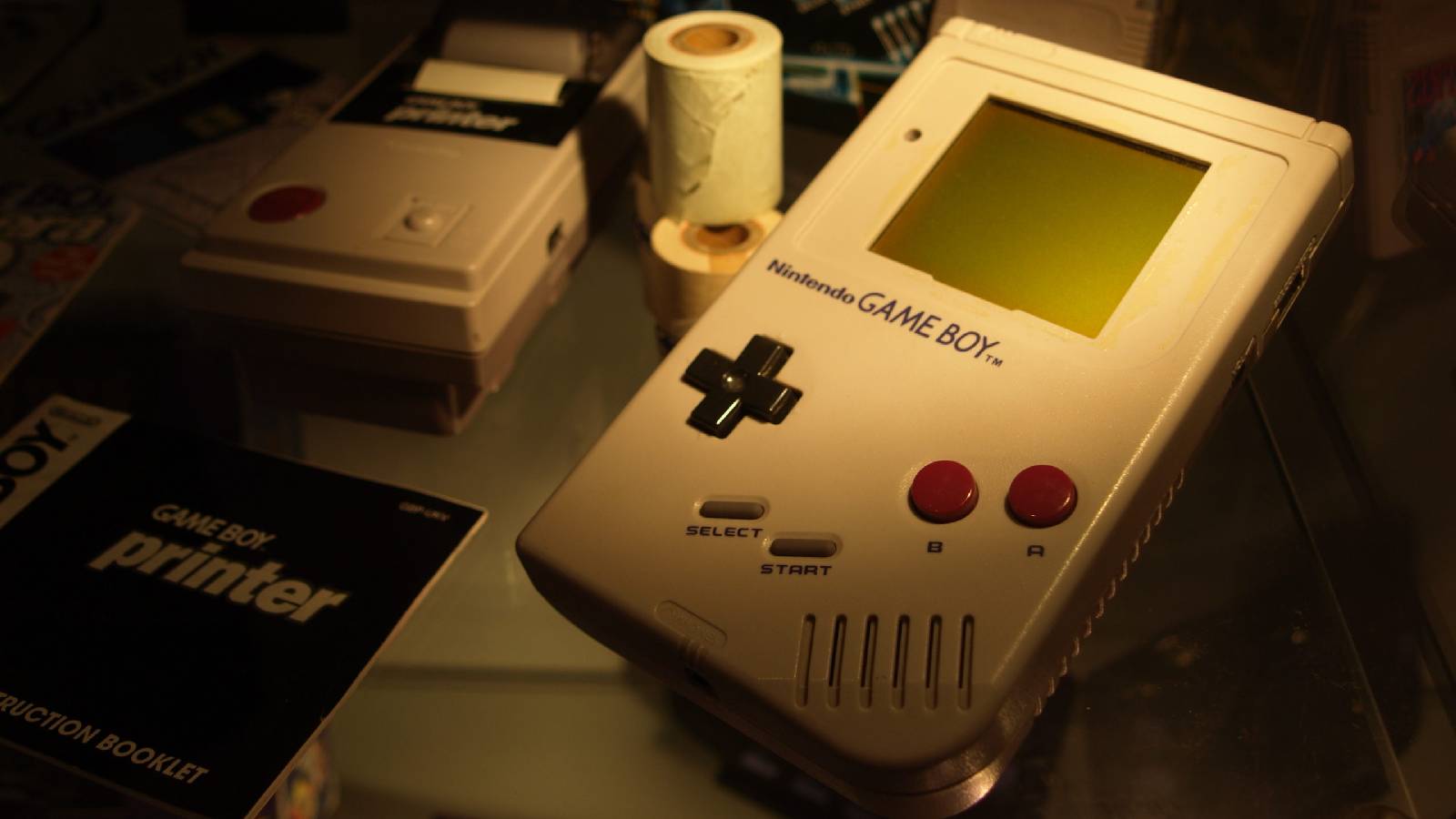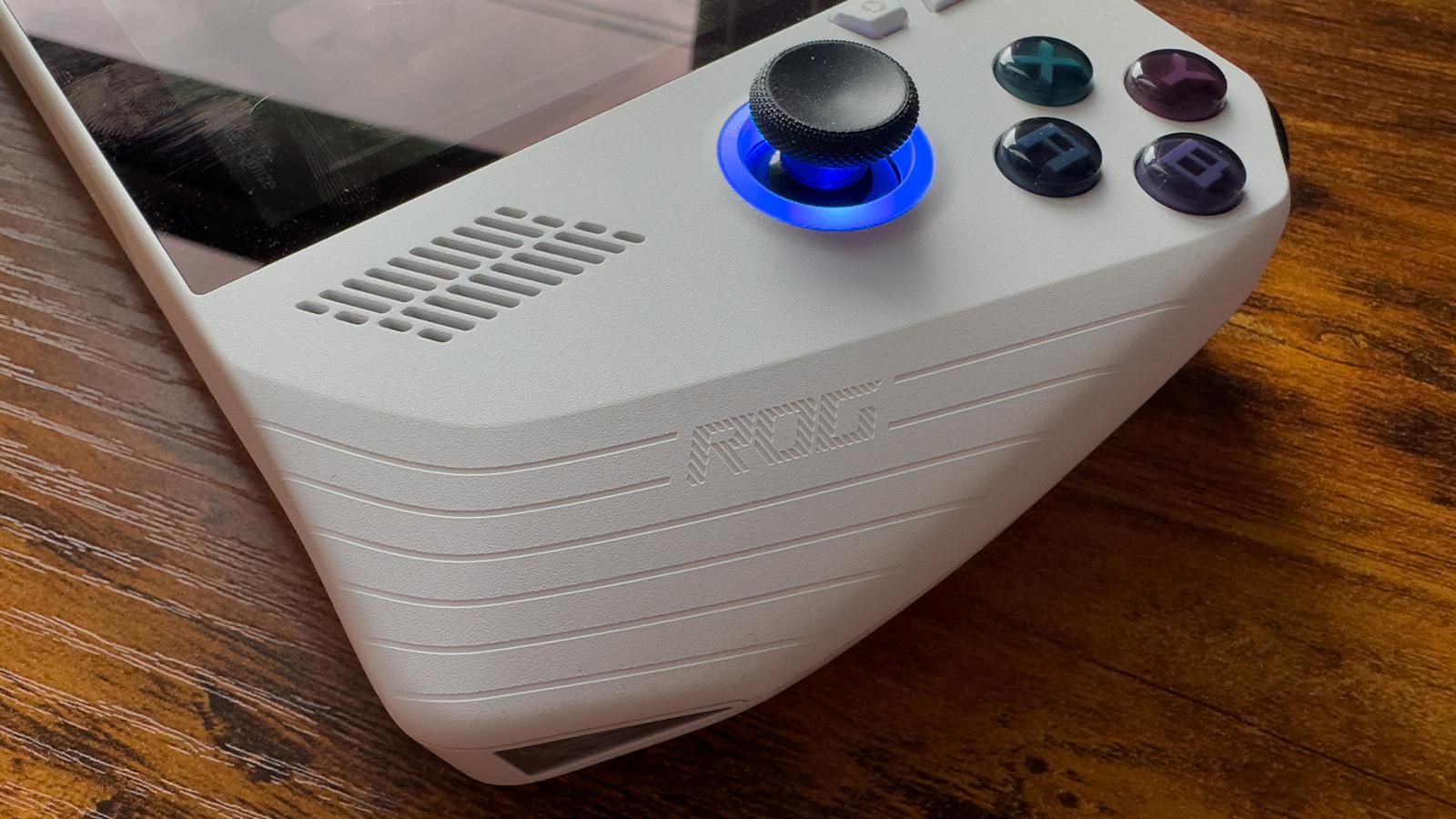Best Steam Deck alternatives in 2024: Ayaneo, Asus ROG & more
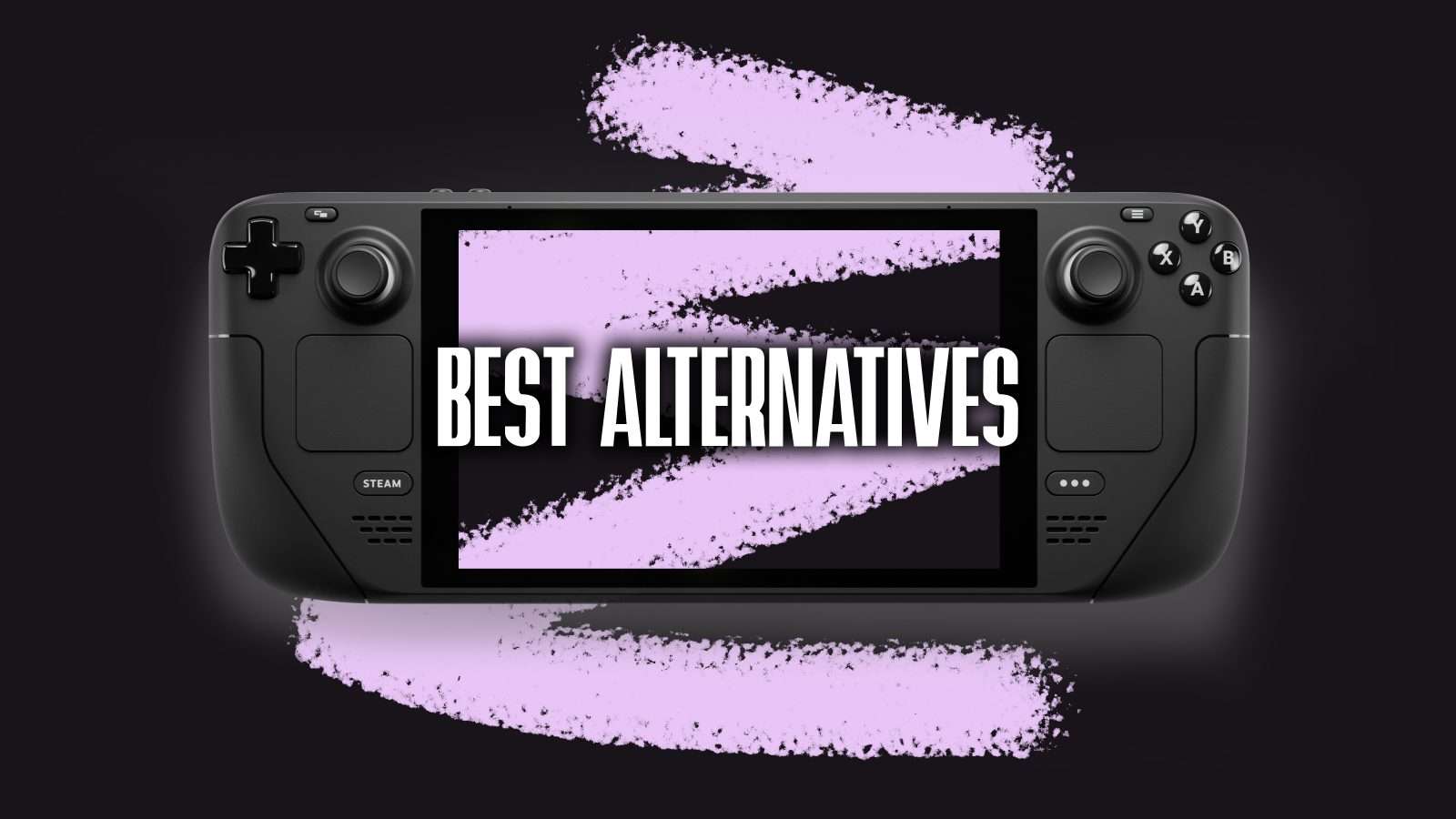 Steam
SteamLooking for a Steam Deck alternative? There are heaps to choose from, ranging from boutique Windows-based options to lightweight Android powerhouses, and we’ve ranked them all right here.
The success of the Steam Deck has prompted many other companies to produce rivals to Valve’s portable powerhouse. Brands such as Ayaneo, Asus, and more have all thrown their hats into the ring to challenge Valve’s dominance. But, there is more to handhelds than just the Steam Deck, with an Android renaissance and Nintendo continuing on as masters of the handheld arena.
With so many options to choose from, how do you decide which handheld is the right one for you? This guide will lay out some of our favorites in the rapidly evolving world of the best gaming handhelds.
1. Ayaneo 2S: Best premium Steam Deck alternative
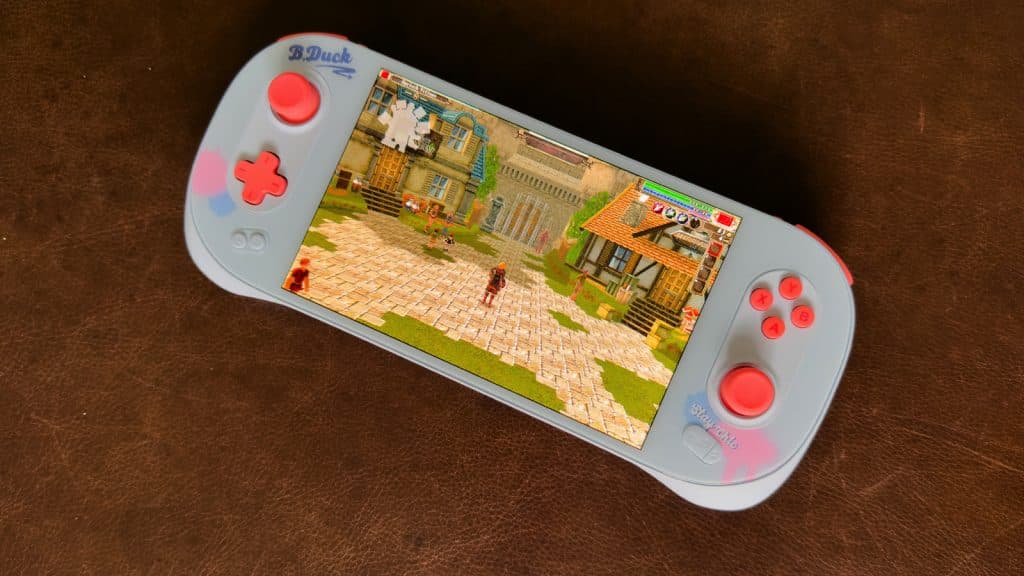
Specifications
- CPU: AMD Ryzen 7 7840U
- Graphics: AMD Radeon 780M
- RAM: Up to 64GB
- Storage: Up to 4TB
- Display: 7-inch 1200p IPS touchscreen
- Operating System: Windows 11
- Weight: 667g
- Price: From $999
| Pros | Cons |
| Powerful specs | High price |
| Bezel-free screen | AyaSpace software can be buggy |
| Windows OS for broad compatibility | No touch pads |
| Hall effect analog sticks and triggers |
Hardly a month passes without Ayaneo launching a new product, but the Ayaneo 2S is one of its most capable. Packed with high-end specifications in a shell that makes it look a bit like an oversized PlayStation Vita, the Ayaneo 2S has features that put it on a higher tier than many of its rivals.
The first, and most vital feature is the use of Hall Effect sensors in the analog sticks and triggers. This all but eliminates the dreaded stick drift and ensures a better level of reliability. The 2S also has an attractive bezel-free screen that provides offers the illusion of a larger screen size.
One interesting point about the Ayaneo 2S is its flexibility. As a Windows device, it’s compatible with a massive range of apps and games. Thanks to its three USB ports and microSD slot, it can even be used as a desktop replacement in a pinch, even without a dock, thanks to its DisplayPort over USB-C functionality.
The major downsides are its high price point compared to the Steam Deck, and the AyaSpace overlay, which remains somewhat buggy.
2. Ayaneo Air 1S: The best lightweight alternative
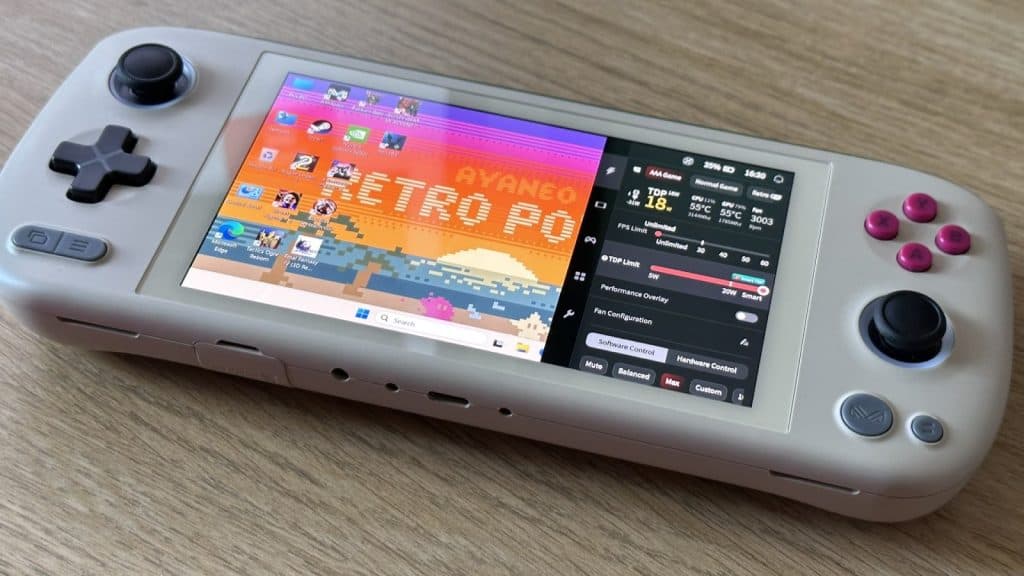 Dexerto
Dexerto Specifications
- CPU: AMD Ryzen 7 7840U
- Graphics: AMD Radeon 780M
- RAM: 32GB
- Storage: 2TB SSD
- Display: 5.5 inch 180p OLED touchscreen
- Operating System: Windows 11
- Weight: 405g
- Price: $799
| Pros | Cons |
| Lightweight | Expensive for the size |
| Comfortable to hold | Disappointing battery life |
| Powerful specifications | AyaSpace is still buggy |
| Windows OS for compatibility |
The Ayaneo Air 1S is the smaller and lighter little brother to devices like the Ayaneo 2S or Ayaneo Kun. Thanks to the same powerful AMD APU stuffed into its small shell, the Ayaneo Air 1S can still handle most modern AAA games to a high standard, and has no problem with retro emulation.
The screen on the Ayaneo Air 1S is smaller than the Ayaneo 2S, but still delivers a nicely sharp and crisp image. It is also a downgrade in terms of RAM and storage in comparison, but that is to be expected in a device that focuses on portability.
Its main draw is how lightweight it is, with some models being lighter even than a Nintendo Switch. Thankfully it still offers Ayaneo’s excellent build quality to ensure it can handle international travel or the regular morning commute without taking damage.
One of its main drawbacks is the battery life, which makes the Air 1S better suited to running emulators, or playing less strenuous games, rather than powering through the latest AAA titles. Despite that, it remains a surprisingly capable machine for its size.
3. Nintendo Switch: The best exclusive games library
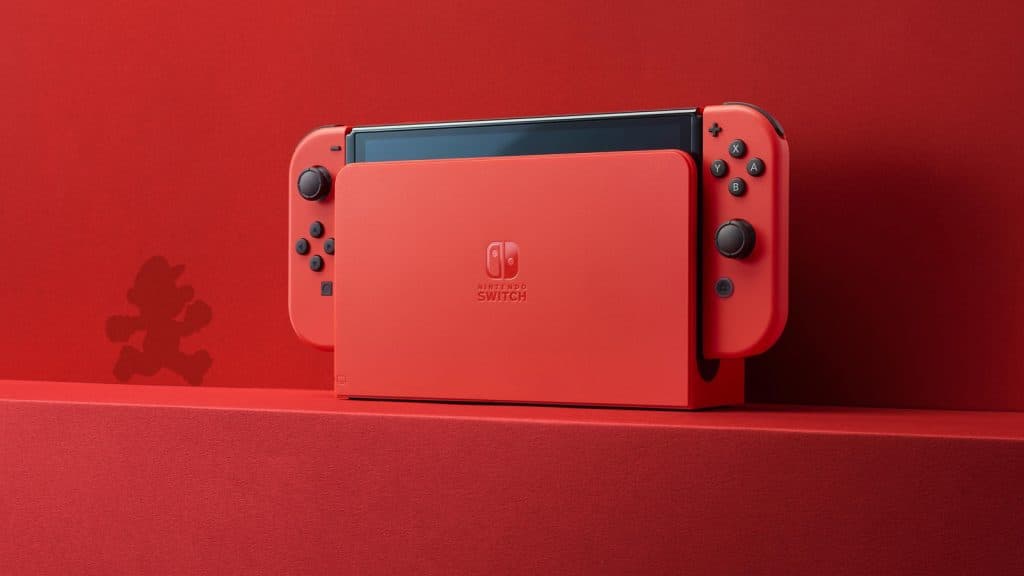 Nintendo
NintendoSpecifications
- CPU/GPU: Nvidia Custom Tegra
- RAM: 4GB
- Storage: 32GB internal
- Display: 6.2-inch LCD touchscreen
- Operating System: Custom
- Weight: 398g (with Joy-Cons attached)
- Price: $299.99
| Pros | Cons |
| Massive game library | Old hardware |
| Inexpensive price | Joy-Con drift is still a problem |
| Nintendo exclusives |
The Nintendo Switch might be approaching its twilight years, as rumors of a Switch 2 rumble on the horizon, but it still has a lot to offer. This comes in the form of its vast library of exclusive games.
The Nintendo Switch is very underpowered compared to the new class of handhelds like the Steam Deck or Asus ROG Ally. But, it has proven very capable of punching above its weight class. Even massive games such as The Legend of Zelda: Tears of the Kingdom or The Witcher III: Wild Hunt can run on the system, though with some compromises.
This brings us to the reason why most people want a Nintendo Switch– the exclusive games. Nintendo has amassed an amazing collection of exclusive IPs, from faithful mascot Mario to Pokemon and Metroid and sprawling JRPG epics like the Xenoblade Chronicles series or Fire Emblem. The Switch Online game library also offers a significant selection of older games for those who buy the subscription service.
Added to all that is the price, which puts it considerably under the Steam Deck and its many rivals. Making it an attractive choice for those on a budget. The prevalence of so many titles also makes it easy to add to your library, with a slick UI that beats most, if not all other handhelds on the market.
4. Asus ROG Ally: The most powerful Steam Deck alternative
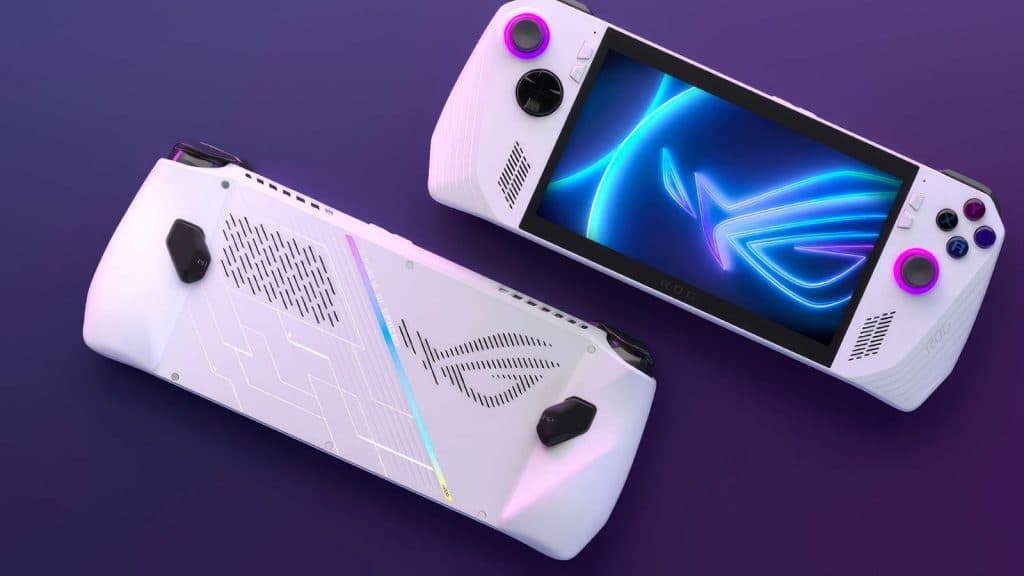 Asus
AsusSpecifications
- CPU: AMD Ryzen Z1 Extreme
- Graphics: AMD Radeon integrated graphics
- RAM: 16GB
- Storage: 512GB
- Display: 7-inch IPS touchscreen
- Operating System: Windows 11 Home
- Weight: 608g
- Price: $699.99
| Pros | Cons |
| Windows OS for wide compatibility | No Hall Effect sticks |
| Dynamic remapping of controls | Poor battery life when gaming |
| Stable gaming performance | No touch pads for Windows navigation |
| Fast charging capability |
The Asus ROG Ally has emerged as probably the most well-known rival to Valve’s mighty Steam Deck thanks to the weight of Asus being behind it. Thankfully the ROG Ally has the specs to match its lofty ambitions, because of the AMD Z1 Extreme APU.
Like the Ayaneo devices, the ROG Ally uses Windows, lets you play pretty much every PC game, on any service. The downside of this is that, unlike the Steam Deck, the Ally lacks custom touch pads to ease navigation. However, this pain is eased by the Asus Armory Crate software, which helpfully organizes your games into a unified game library and provides an easy way to tweak settings as needed.
Despite its performance, power and build quality, the Ally does struggle in some areas. Our review noted that it did somewhat feel as if Windows was fighting against you.
Additionally, the Asus ROG Ally lacks Hall Effect sensors for its analog sticks, making them prone to wear and stick drift over time.
The Asus ROG Ally is a solidly built and powerful alternative to the Steam Deck, despite its shortcomings.
5. Ayn Odin 2: The best budget Steam Deck alternative
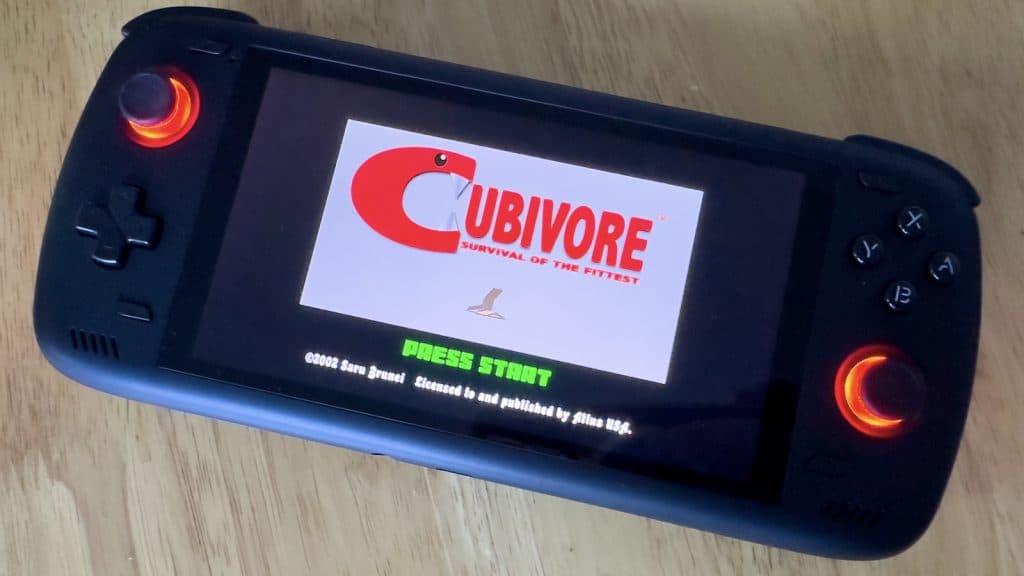
Specifications
- CPU: Qualcomm Snapdragon 8 Gen 2
- Graphics: Adreno 740 GPU
- RAM: Up to 16GB
- Storage: up to 512GB
- Display: 6-inch IPS touchscreen
- Operating System: Android 13
- Weight: 420g
- Price: $299
| Pros | Cons |
| Inexpensive | Uses Micro HDMI for external connection |
| Comfortable to hold for long periods | Limited to Android games, streaming or emulation |
| Excellent Android performance |
The Ayn Odin 2 might not look like it belongs on this list since it is an Android-based handheld. Despite that, the Odin 2 is a very capable machine, thanks to the powerful Qualcomm Snapdragon 8 Gen 2 processor inside.
When it comes to modern gaming, the Odin 2 is mostly limited to Android-based mobile games, but does a spectacular job of running the likes of Honkai: Star Rail and Call of Duty: Mobile. But, where the Odin 2 shines is in emulation.
Thanks to its powerful processor, the Odin 2 can support anything from the original NES or Game Boy right up to the PlayStation 2 or GameCube, which gives users an impressive library to choose from.
To support its gaming pedigree, the Odin 2 has an asymmetrical, Xbox-style layout for its analog sticks to provide a comfortable and familiar position for gaming fans. For additional quality, the analog sticks are equipped with Hall Effect sensors to eliminate stick drift.
The open nature of the Android ecosystem means that there are plenty of ways to customize and tweak the Odin 2 to make it into the handheld device you need it to be. It might not be as powerful as a Steam Deck, but it has some interesting tricks up its sleeve nonetheless.
6. OneXPlayer Pro 2: The best big-screen Steam Deck alternative
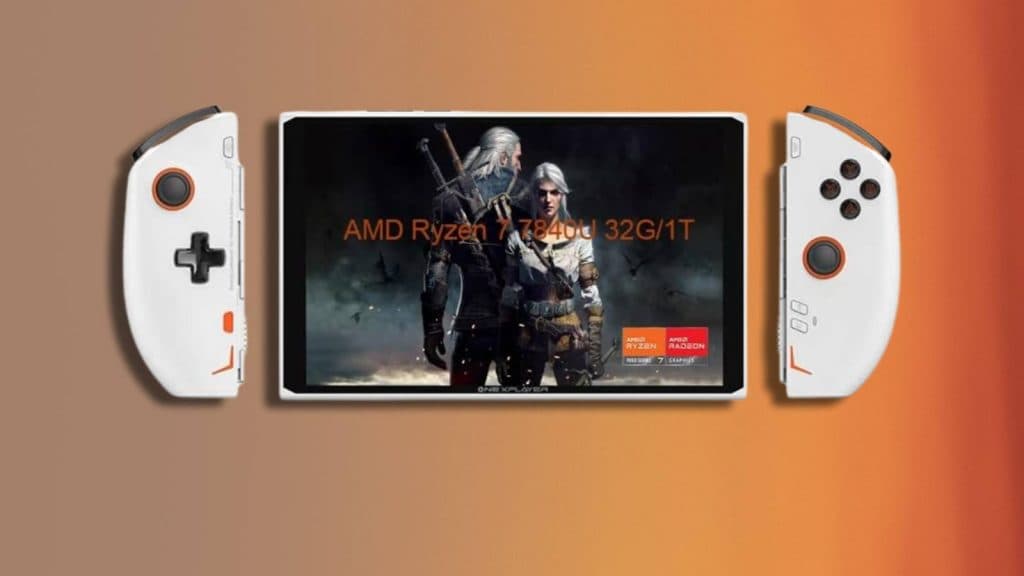
Specifications
- CPU: AMD Ryzen 7 7840U
- Graphics: AMD 780M
- RAM: 32GB
- Storage: 1TB
- Display: 8.4-inch IPS touchscreen
- Operating System: Windows 11
- Weight: 848g
- Price: $949
| Pros | Cons |
| Massive and beautiful display screen | Large and heavy |
| Powerful specs | Tablet and laptop modes don’t work very well |
| Impressive battery life |
The OneXPlayer Pro 2 is marketed as a ‘three-in-one’ device that can act as a handheld gaming device as well as a tablet or laptop. In reality, it does a pretty good job as a handheld gaming device but is much less convincing as a tablet or laptop.
The touted flexibility of the OneXPlayer Pro 2 means it boasts some chunky proportions, which enable it to have a massive 8.4-inch screen and support the mechanisms for the Joy-Con-like detachable controllers. Like the detachable keyboard, this is an interesting feature, but its practicality is somewhat limited.
The OneXPlayer Pro 2 has some impressive specs that let it take advantage of its comparatively huge screen, but the device is somewhat less well-built and polished than rival devices such as the Ayaneo 2S or Asus ROG Ally. Which is a shame considering its price point.
7. GPD Win 4: The best Steam Deck alternative with a keyboard
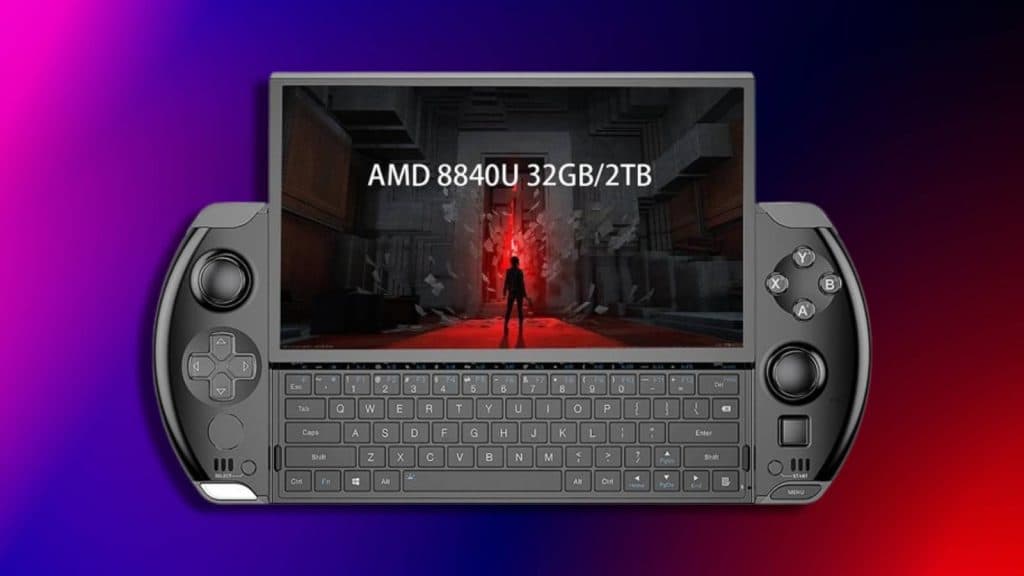
Specifications
- CPU: AMD Ryzen 7 6800U
- Graphics: AMD Radeon 680M
- RAM: 32GB
- Storage: 1TB
- Display: 6-inch IPS touchscreen
- Operating System: Windows
- Weight: 607g
- Price: $1,100
| Pros | Cons |
| Built-in keyboard | High price point |
| Windows for broad compatibility | No Hall Effect sensors |
| Comfortable ergonomic design |
At first glance, the GPD Win 4 resembles an oversized PlayStation Vita. Despite its outward appearance, it is a powerful gaming handheld on the inside, with some additional clever tricks to make it a worthy rival to the Steam Deck.
As with several other handhelds on this list, the GPD Win 4 comes with Windows 11 pre-installed. It has some advantages over its rivals, mostly thanks to its built-in keyboard. Similar to the Ayaneo Slide, the GPD Win 4 has a keyboard hidden underneath the screen, which slides up when the keyboard is in use. This keyboard means that the analog sticks are free to act as a mouse. In fact, the device even has a Mouse Mode and Controller mode.
The advantages of this are that it makes Windows much easier to use, and allows the GPD Win 4 to be used as a desktop replacement if necessary, especially with the range of ports it has, including two USB-C ports and a full-size USB-A port.
The downside is that the keyboard makes it bulkier and heavier than some other examples on this list. It also lacks Hall Effect sensors, making the analog sticks prone to drift.
8. Logitech G Cloud: The best Steam Deck alternative for cloud gaming
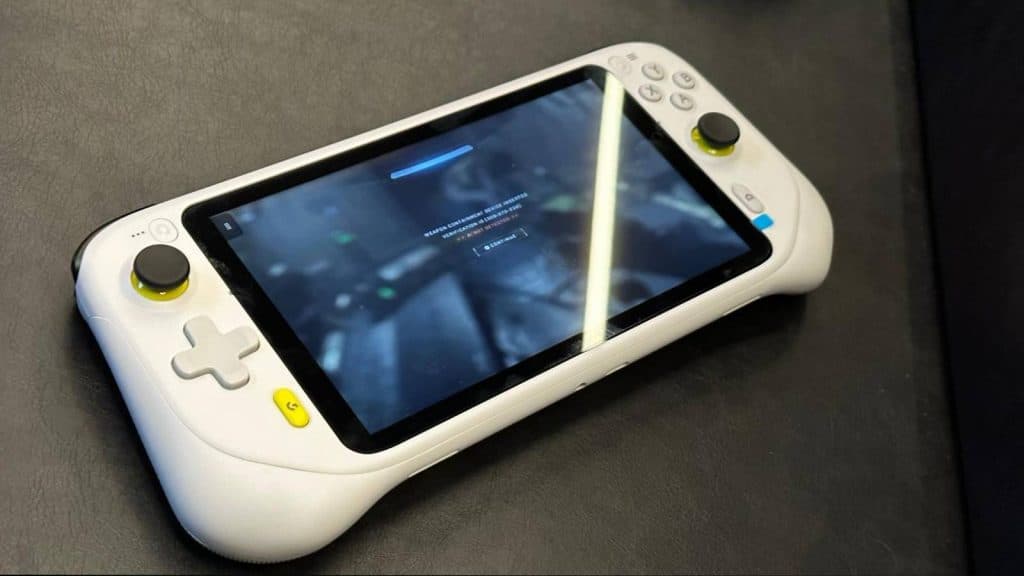 Dexerto
DexertoSpecifications
- CPU: Qualcomm Snapdragon 720G
- Graphics: Adreno 618 750MHz
- RAM: 4GB
- Storage: 64GB
- Display: 7-inch IPS touchscreen
- Operating System: Android 11
- Weight: 463g
- Price: $349
| Pros | Cons |
| Long battery life | Needs constant stable WiFi connections |
| Comfortable to hold | Expensive for the specs |
| Good quality controls | Performance in Android is middling |
As the name implies, the purpose of the Logitech G Cloud is not built to install and run games locally, but instead to stream them from the cloud. Logitech has attempted to make this a seamless and comfortable experience for users by providing a comfortable and ergonomic device.
The G Cloud works well with services such as Xbox Game Pass or Nvidia GeForce Now, providing the ability to stream games from a powerful console or PC. Unfortunately, there are a few drawbacks to this. For one thing, the G cloud only works with WiFi, there is no support for 4G or 5G, limiting the usefulness of the device considerably.
The G Cloud can also play Android games natively, though its performance in this niche is best described as ‘middling’. The G Cloud can do a number of things, but not all of them well. Thankfully it is wrapped in a lightweight and ergonomic package. For some select users, the versatility and comfort will be worth the price.
If you’re after even more useful guides to do with the Steam Deck, we have many more guides for you to check out right here:
How to use the Steam Deck’s keyboard in desktop mode | Steam Deck vs Nintendo Switch: Which one is better in 2024? | How to install Windows on Steam Deck: Dual boot & more | Steam Deck SSD installation: How to upgrade your storage drive | Best Steam Deck games in 2023: Resident Evil 4 Remake, FFXIV & more | How to add extra storage on your Steam Deck and Dock | Best handheld console 2023 | Steam Deck 2: Price, specs, & benchmark speculation
